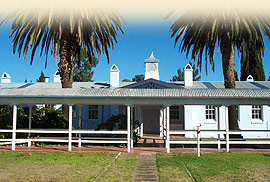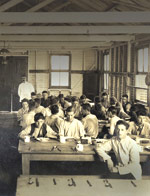HISTORY OF SCHEYVILLE

Scheyville National Park is one of the most important places in the history of migration to Australia. Scheyville's history covers two major periods of Australian nation-building - when migration was focused on expanding our place in the British Empire and, after 1945, when citizens from the wider world were invited to become Australian.
A visit to Scheyville expands our understanding of migration to Australia. Many of the buildings and landscapes have survived, allowing us to experience elements of the migration story.
Scheyville National Park was part of Pitt Town Common set aside for the new neighbouring town in 1804. Although used for grazing and farming, Scheyville remains one of the largest surviving remnants of the Cumberland Plain bushland which once covered the Sydney Basin.
In 1893, with the Australian colonies suffering the first 'Great Depression', a co-operative farm for unemployed workers was established on 2,500 acres of the Common. This socialist experiment failed by 1896, and the NSW Government established a Casual Labour Farm to train unemployed city workers as farm labourers.
Around this time the farm gained the Scheyville name (pronounced 'sky ville'), after William Schey, NSW Director of Labour and Industry.
From 1911 Scheyville farm trained British boys for work on Australian farms. Between 1911 and 1939, 7,500 'Dreadnought Boys' arrived in NSW. Most were trained for two or three months at Scheyville before assignment to a farm. However child migration only accounted for a few percent of the relatively small migrant numbers of the 1920s and 1930s.




